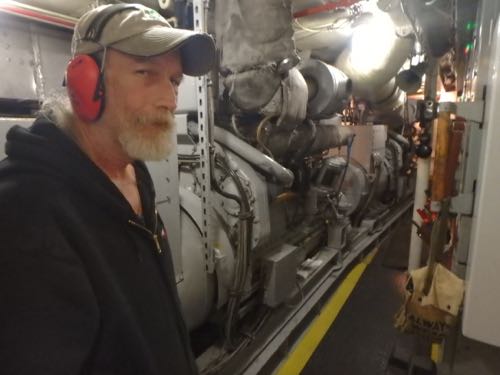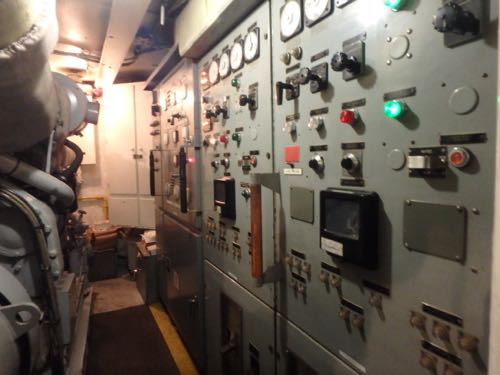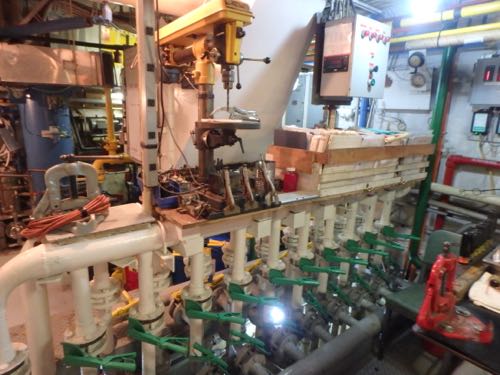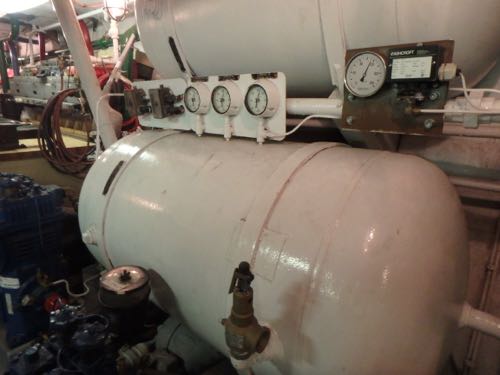
The galley, or dining room of the Oceanus, provides a shared meeting space for the crew and science teams. It's a place where we can ask crew members about the ship's technical and mechanical aspects. It was here, early this morning, that Henry "Chip" Millard, First Assistant Engineer, graciously answered my questions and offered to take me on a tour of the Oceanus. Before entering the control room, Chip had me put on heavy-duty ear muffs. When he opened the door, I could hear why.

We started the tour by the generator for the main power distribution and then walked toward the main fire protection unit which uses saltwater.

A colorful, brightly lit room which houses the ballast manifold was the next stop. The ballast manifold is a series of "ins" and "outs" to control direction. These valves are used for emptying and filling ballast tanks. When a ship is in motion, these valves are set so that the ship is balanced. The colors are indicative of the purpose of the valve or unit. For example, yellow signifies fuel, green is salt water, orange is air, red is fire protection water, blue is fresh water, and silver is heated water.

Air flasks, which are storage bottles for compressed air, are used for starting engines and controlling the pitch of the propulsion system and speed. The Oceanus has a variable pitch propeller, which means the speed of the shaft can be varied and in turn affect the speed of rotation and pitch.
The control system on the bridge determines how much of a signal will get back to the CPP, Controllable Pitch Propeller. In the engine room, the resulting air signal triggers a hydraulic signal which will then drive the inner shaft to push the propeller into reverse or forward.
This whirlwind tour of the engine room took place around 5:00 a.m., pre-caffeine. I was fortunate to have been in the galley just as Chip was finishing breakfast and had a few free minutes to give me a tour of the engine room.
Polar Profile: Teresa MacMartin, Chief Steward

If you're feeling pangs of hunger on the Oceanus, the place to be is in the galley of Teresa MacMartin. Over her 15-year career, Teresa has sailed the seven seas and visited parts of the world few have ever seen. To have a career like Teresa's, one must undergo extensive background checks by the U.S. Coast Guard, pass maritime safety courses, and be approved by the TSA. Flexibility, a good disposition and knowledge of religious food preferences and health requirements of all on board are essential for those aspiring to be a successful and very much appreciated Chief Steward like Teresa MacMartin.


Comments